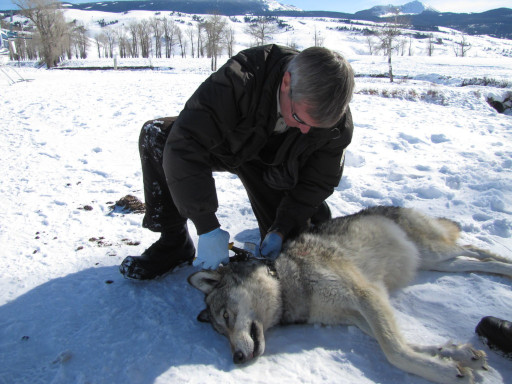Sampling with replacement until you’ve seen everything

Suppose you have a standard deck of 52 cards. You pull out a card, put it back in the deck, shuffle, and pull out another card. How long would you expect to do this until you've seen every card?
Here's a variation on the same problem. Suppose you're a park ranger keeping data on tagged wolves in a national park. Each day you catch a wolf at random, collect some data, and release it. If there are 100 wolves in the park, how long until you've seen every wolf at least once?
We'll solve this problem via simulation, then exactly.
SimulationThe Python code to solve the problem via simulation is straight forward. Here we'll simulate our ranger catching and releasing one of 100 wolves. We'll repeat our simulation five times to get an idea how much the results vary.
import numpy as np from numpy.random import default_rng rng = default_rng() num_runs = 5 N = 100 # number of unique items for run in range(num_runs): tally = np.zeros(N,dtype=int) trials = 0 while min(tally) == 0: tally[rng.integers(N)] += 1 trials += 1 print(trials)
When I ran this, I got 846, 842, 676, 398, and 420.
Exact solutionSuppose we have a desk of N cards, and we sample the deck with replacement M times. We can select the first card N ways. Ditto for the second, third, and all the rest of the cards. so there are NM possible sequences of card draws.
How many of these sequences include each card at least once? To answer the question, we look at Richard Stanley's twelvefold way. We're looking for the number of ways to allocate M balls into N urns such that each urn contains at least one ball. The answer is
N! S(M, N)
where S(M, N) is the Stirling number of the second kind with parameters M and N [1].
So the probability of having seen each card at least once after selecting M cards randomly with replacement is
N! S(M, N) / NM.
Computing Stirling numbersWe've reduced our problem to the problem of computing Stirling numbers (of the second kind), so how do we do that?
We can compute Stirling numbers in terms of binomial coefficients as follows.
Now we have a practical problem if we want to use this formula for larger values of n and k. If we work with floating point numbers, we're likely to run into overflow. This is the perennial with probability calculations. You may need to compute a moderate-sized number as the ratio of two enormous numbers. Even though the final result is between 0 and 1, the intermediate results may be too large to store in a floating point number. And even if we don't overflow, we may lose precision because we're working with an alternating sum.
The usual way to deal with overflow is to work on a log scale. But that won't work for Stirling numbers because we're adding terms together, not multiplying them.
One way to solve our problem-not the most efficient way but a way that will work-is to work with integers. This is easy in Python because integers by default can be arbitrarily large.
There are two ways to compute binomial coefficients in Python: scipy.special.binom and math.comb. The former uses floating point operations and the latter uses integers, so we need to use the latter.
We can compute the numerator of our probability with
from math import comb def k_factorial_stirling(n, k): return sum((-1)**i * comb(k, i)*(k-i)**n for i in range(k+1))
Then our probability is
k_factorial_stirling(M, N) / N**M
If we compute the probability that our ranger has seen all 100 wolves after catching and releasing 500 times, we get 0.5116. So the median number of catch and release cycles is somewhere around 500, which is consistent with our simulation above.
Note that the numerator and denominator in our calculation are both on the order of 101000 while the largest floating point number is on the order of 10308, so we would have overflowed if we'd used binom instead of comb.
Related posts[1] It's unfortunate that these were called the second kind" because they're the kind that come up most often in application.
Image: Fastening a Collar" by USFWS Mountain Prairie is licensed under CC BY 2.0 .